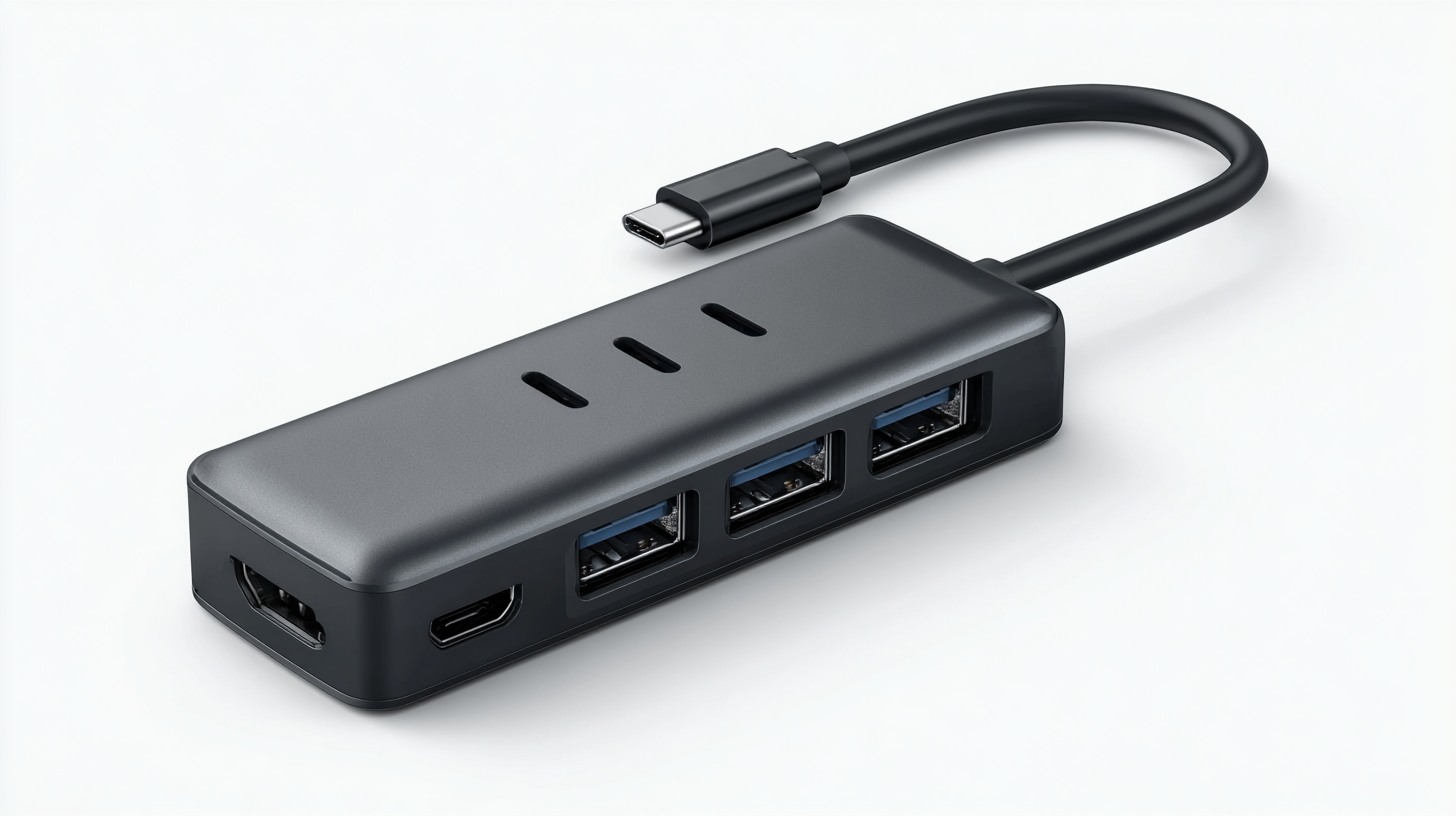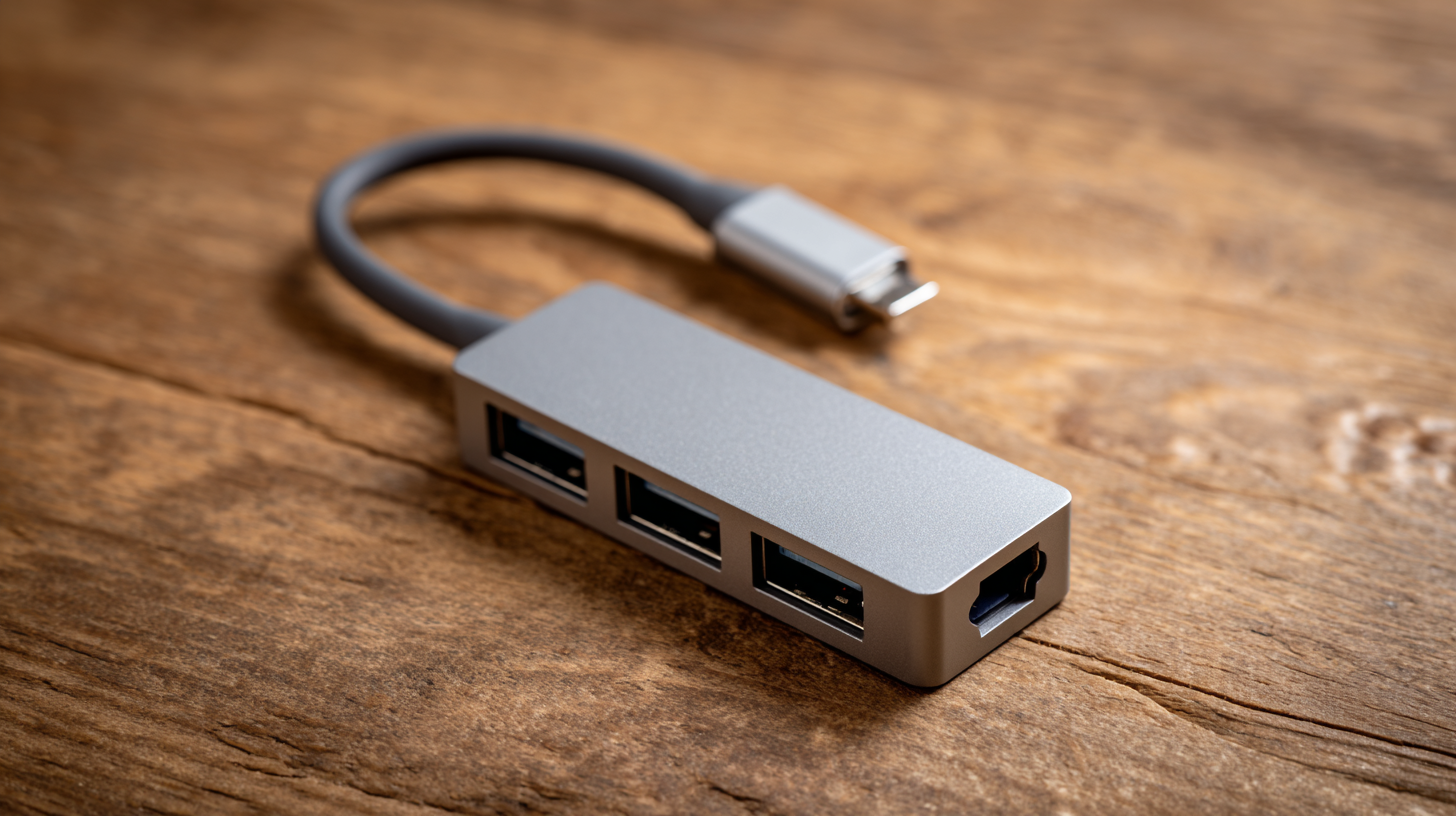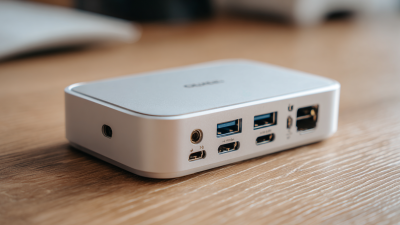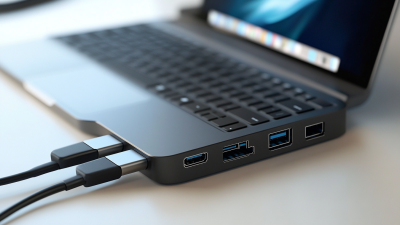
-
Home
-
Products
-
About Us
-
OEM&ODM
-
News
-
Contact Us
Inquiry
Form loading...

In today's fast-paced digital environment, the demand for seamless connectivity and enhanced device functionality has reached unprecedented levels. As various devices such as laptops, tablets, and smartphones increasingly become essential for both work and leisure, the need for efficient networking solutions has never been more critical. The USB Hub Ethernet Adapter stands out as a pivotal technology that not only allows users to expand their connectivity options but also significantly improves internet performance, particularly in environments with limited Wi-Fi capabilities. According to a report by MarketsandMarkets, the USB hub market is projected to grow to $4.5 billion by 2025, reflecting an increasing reliance on versatile connectivity solutions. By integrating a USB Hub Ethernet Adapter, users can unlock the full potential of their devices, ensuring stable and faster internet access while simultaneously connecting multiple peripherals, ultimately enhancing productivity and user experience in an increasingly connected world.

USB Hub Ethernet adapters serve as vital tools for maximizing the potential of modern devices, particularly with the advent of laptops like the MacBook Air M2, which often come with limited ports. Understanding the basics of these adapters is essential for users seeking to enhance their connectivity options. USB Hub Ethernet adapters typically feature multiple USB ports and an Ethernet connection, allowing users to connect various peripherals and enjoy reliable internet access simultaneously. According to industry data, USB-C ports are increasingly becoming the standard in consumer electronics, with over 1 billion devices utilizing this technology in 2022 alone.
When selecting a USB Hub Ethernet adapter, consider factors like data transfer speed and the number of available ports. An adapter that supports 5Gbps transfer rates and includes multiple USB connections can significantly improve your workflow. For example, a recent review noted that specific hubs enable seamless integration with a variety of devices, making them an essential accessory for any MacBook user.
Tips: Ensure that any adapter you choose is compatible with your device’s specifications to avoid connectivity issues. Also, look for hubs that are compact and portable, facilitating easy use on the go. Lastly, opt for adapters with robust build quality to ensure longevity and consistent performance.
This chart illustrates the various benefits of using USB Hub Ethernet Adapters, highlighting the average percentage increase in performance, user satisfaction, and device compatibility that users can expect when utilizing these adapters.
When selecting a USB hub Ethernet adapter, several key features can enhance your device's functionality. Firstly, compatibility is critical; ensure the adapter supports your operating system, whether it's Windows, macOS, or Linux. This consideration ensures seamless integration and avoids connectivity issues. Additionally, the number of ports available on the hub can significantly affect usability. A model with multiple USB ports can accommodate various peripherals, allowing you to connect keyboards, mice, and storage devices simultaneously.
Another important feature to consider is data transfer speed. Look for adapters that support USB 3.0 or higher, as these provide faster data transfer rates compared to older versions. This speed is essential for tasks such as file transfers or streaming high-definition media. Moreover, ensure that the Ethernet capabilities meet your networking needs. A gigabit Ethernet connection is ideal for those who require high bandwidth for gaming or large file downloads, ensuring a stable and rapid internet connection. By focusing on these key features, you can choose a USB hub Ethernet adapter that maximizes the potential of your devices.

USB hub Ethernet adapters are revolutionizing the way we connect our devices. By combining multiple USB ports with an Ethernet connection, these adapters provide a seamless way to elevate your device's connectivity. This is particularly beneficial in environments where Wi-Fi signals may be weak or unreliable, as a wired Ethernet connection often offers superior stability and faster speeds. Users can easily connect multiple peripherals—such as keyboards, mice, and external storage—without sacrificing network performance.
Moreover, the convenience of USB hub Ethernet adapters extends beyond mere connectivity. They simplify the desktop setup by minimizing cable clutter and providing a single solution for connecting various devices. This is especially advantageous for laptop users, who can maximize their productivity by utilizing their device's multiple functionalities with just one adapter. Whether you're working from home, in a co-working space, or even on the go, USB hub Ethernet adapters enable you to maintain a reliable internet connection while expanding your device's capabilities effortlessly.
| Feature | Description | Benefits | Compatibility |
|---|---|---|---|
| Multiple Ports | Equipped with multiple USB ports and Ethernet. | Connect multiple devices simultaneously. | Works with laptops, desktops, and tablets. |
| Speed Upgrade | Supports high-speed data transfer rates. | Faster file transfers and improved internet speed. | Compatible with USB 3.0 and USB-C devices. |
| Power Delivery | Provides power to connected devices. | Eliminates the need for multiple chargers. | Ideal for smartphones, tablets, and accessories. |
| Compact Design | Portable and lightweight design for travel. | Easily fits in bags and doesn't add bulk. | Suitable for on-the-go professionals and students. |
| Plug and Play | No installation software required. | Instant connectivity; easy to use. | Works with major operating systems without hassle. |
Setting up your USB hub Ethernet adapter for optimal performance involves several key steps. First, ensure that your device is compatible with the adapter. Most USB hubs with Ethernet ports are designed to work seamlessly with laptops and desktops, but verifying compatibility can save time and frustration. Once confirmed, connect the adapter to your device’s USB port. It’s advisable to use a USB 3.0 port if available, as this will provide faster data transfer rates compared to USB 2.0.
After making the physical connection, install any necessary drivers that your system may require. Most modern operating systems will automatically detect the adapter and install the default drivers, but visiting the manufacturer’s website for the latest updates can enhance performance and reliability. Finally, configure your network settings to ensure optimal connectivity. This may involve setting up a static IP address or adjusting Ethernet settings based on your network’s specifications. By following these steps, you can unlock the full potential of your USB hub Ethernet adapter, ensuring a stable and fast internet experience.
USB Hub Ethernet adapters can significantly enhance your device's connectivity but may come with their own set of challenges.
Common issues with these adapters include
frequent disconnections, compatibility problems, and driver conflicts. A recent industry report highlights that nearly
30% of users experience frequent connectivity issues due to outdated
drivers or power management settings. It's essential to ensure that your drivers are up to date and that power settings
are adjusted to prevent the device from going to sleep.
Tips: If you encounter disconnection issues, try updating your USB Hub Ethernet adapter's
drivers and adjusting your device's power settings, as this can often resolve connectivity problems.
Another prevalent issue is hardware incompatibility, particularly with newer devices and USB-C standards. As reported, many
users experience frustrations with USB-C devices due to varying feature sets and compatibility among brands, which can
impede seamless connectivity. Ensuring that all your devices support
the required features of your adapter can mitigate this issue.
Tips: When purchasing a USB Hub Ethernet adapter, look for models that explicitly list
compatibility with your devices to avoid future frustration.






